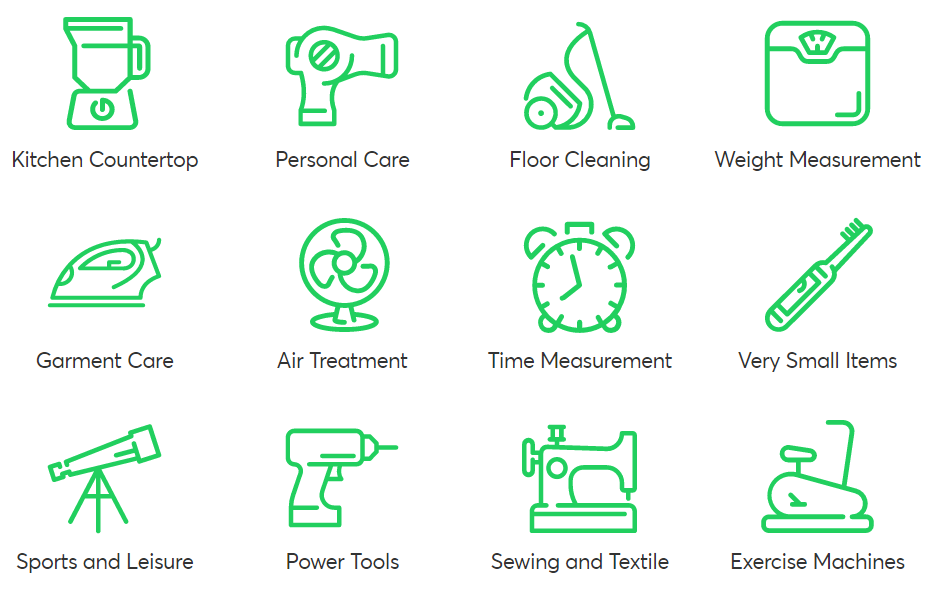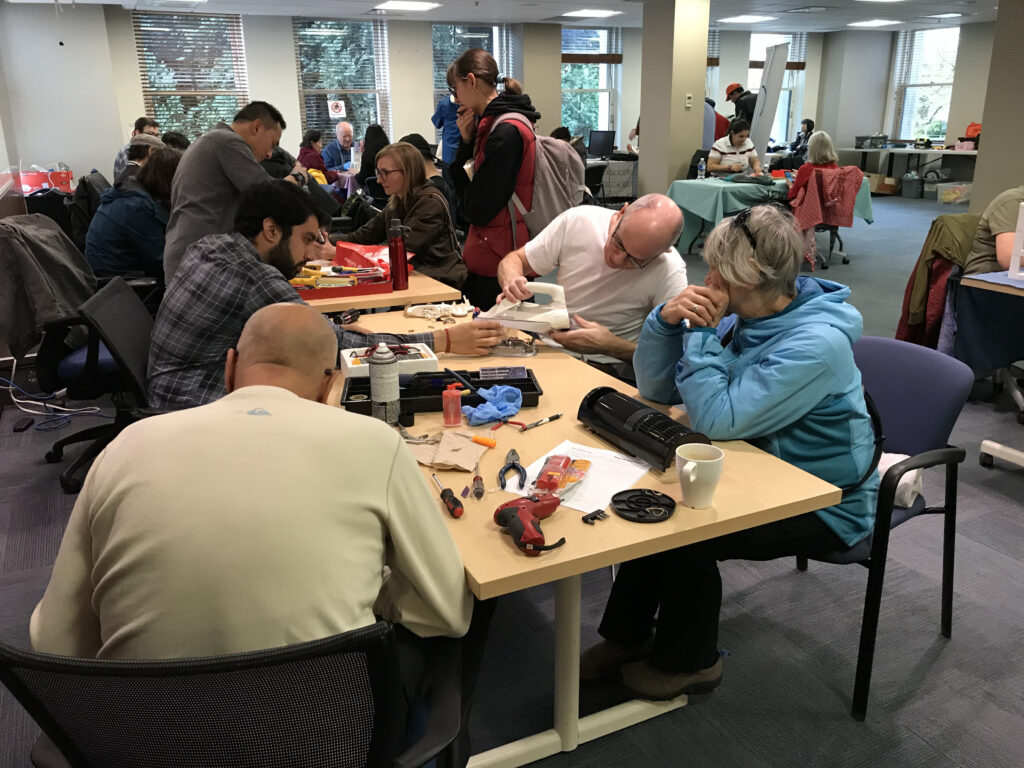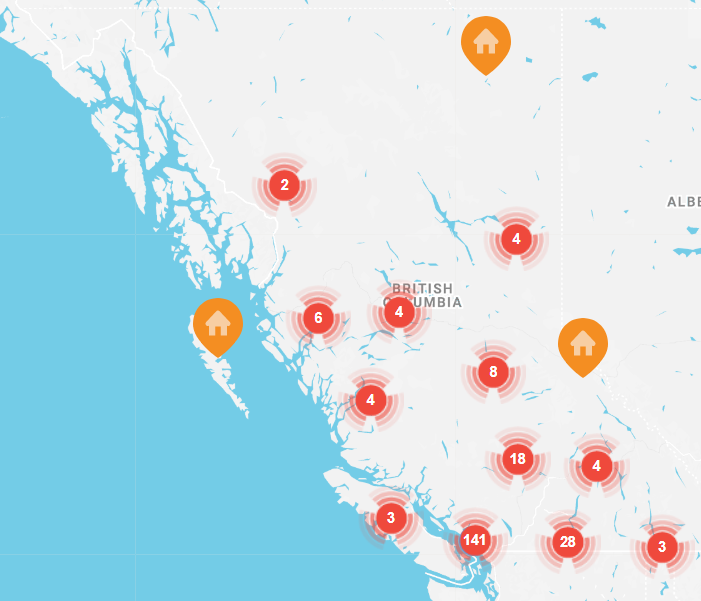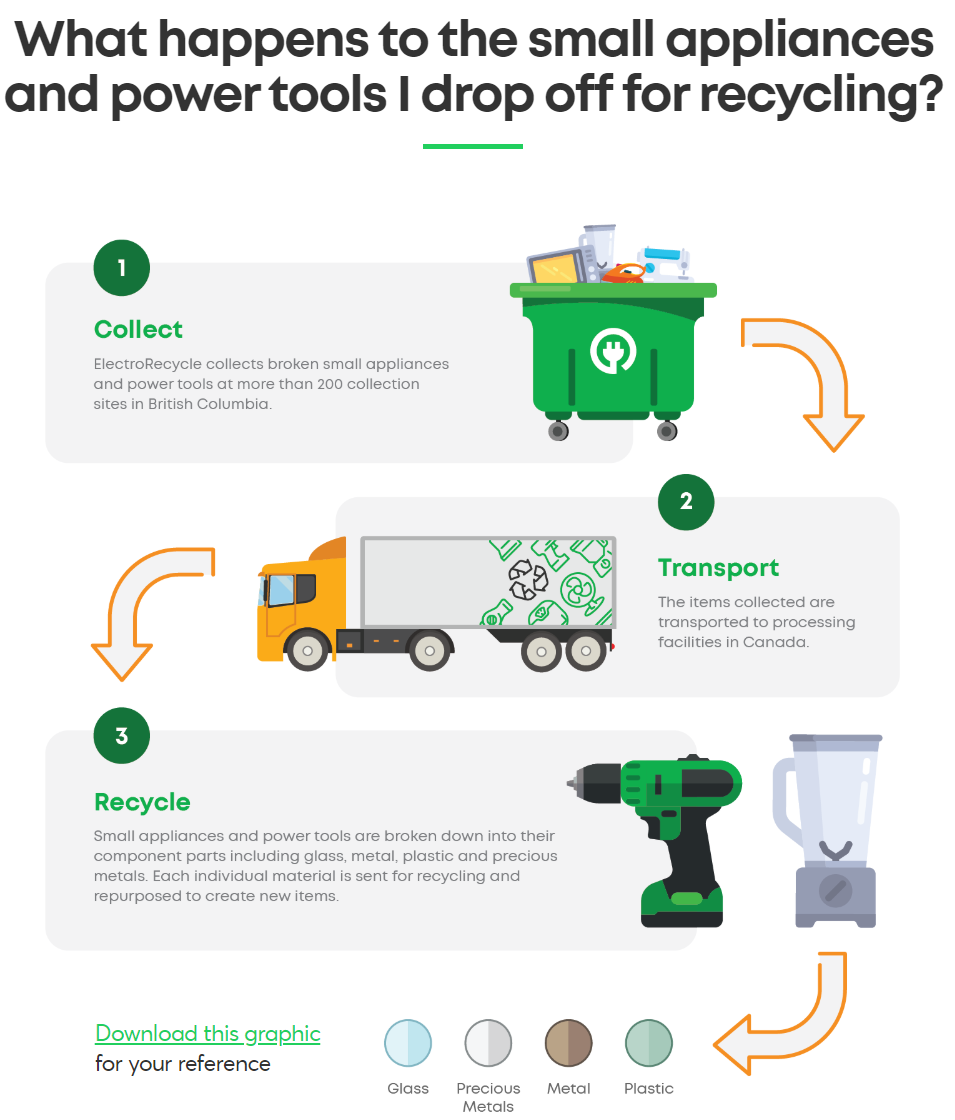YES! You made it through another winter season and survived that controversial Spring Forward! Fun fact: some communities in the province do not use Daylight Saving Time, including Chetwynd, Creston, Dawson Creek, Fort Nelson, and Fort St. John.
This annual leap forward into spring is usually celebrated with some major home cleaning and decluttering. You’ll find 5 steps below to maximize your spring cleaning routine, especially when it comes to those broken small appliances and power tools that may be adding to the clutter.
Step 1: Gather your broken small appliances and power tools in one spot
First things first! You are likely aware of the items that are on their last legs, or are in need of a little tender loving care in your home. It may very well be that alarm clock you keep having to reset every evening, or that dustbuster that just can’t seem to bust that dust! Go through your home room by room, gather up all of the broken or unused small appliances and power tools that are lying around. Toasters, fans, stud finders, and even electric toothbrushes, you can recycle more than 400 items with ElectroRecycle. Find the full list right here.

Step 2: Check out local repair opportunities
We often hear people talk about the good old days of the neighborhood repair shop that could fix anything. The days of cheaper products and irreplaceable parts have made these repair shops an endangered species. However, oftentimes a little repair can go a long way. If you’re interested in extending the life of your favorite item, take it to one of the local repair cafes that have been popping up in many parts of British Columbia. The events are completely free and are volunteer-run. Their success is largely due to these skilled volunteers’ dedication to building and expanding communities that are keen to reduce waste and educate others to do so as well.
If you want to learn more about the benefits of repair cafes and the types of items you can bring, read our blog post on repair. You’ll find some exciting facts about repair in BC! Check out these organizations’ upcoming events for free opportunities to connect with repair experts. Please share with us any we may have missed.
- Metro Vancouver Repair Café
- Fairfield Repair Cafe
- Sooke Repair Cafe
- Kamloops Repair Cafe
- Squamish Repair Cafe
- Maple Ridge Repair Cafe
Also, if there isn’t a local Repair Cafe in your community, Fixit Clinic organizes Virtual Fixing Sessions on Zoom! Their Sessions allow those knowledgeable about repairs to connect with those who need help fixing at home. It’s accessible globally and it’s free to sign-up for repair help! For additional help figuring out small appliance repairs at home read our Troubleshooting Tips and Repair Resources blog post.

Step 3: Find out where to recycle
So if you’ve been through the first 4 Rs: Refuse – Reduce – Reuse – Repair, the last step for your spring cleaning routine is to bring your small appliances and power tools to be Recycled! This is what ElectroRecycle is here for. We work with more than 200 recycling locations in British Columbia to make recycling easy and accessible. Check out our recycling locator tool online to find out where and when to go. Our locator tool conveniently provides contact information, hours of operation and the types of products that are accepted (small items and/or oversized items, such as a treadmill) for each location.

Step 4: Visit the recycling depot or one of our events
You are now ready to drop off your broken small appliances and power tools at a recycling depot. You might be wondering what happens to the items once you’ve dropped them off? The infographic below details the process after the items are collected. The broken products are transported to recycling facilities in Canada, where they will be broken down into component parts including glass, metal, plastic and precious metals. Each individual material is sent for further recycling and re-purposed to create new items.
Instead of visiting a depot, you may also be interested in talking to us directly at a collection event. If so, please come find us at one of our upcoming events. We’d love to speak with you directly and share our passion for protecting the environment.

*Click the image to see the full-sized version
Step 5: Enjoy your uncluttered space
You’ve scrubbed, swept, vacuumed, and taken all of your broken small appliances and power tools to the recycling depot. Now your home sweet home is free of clutter and you can focus on the arrival of Spring!
After nine years of operation, ElectroRecycle has diverted more than 34 million kilograms of small appliances and power tools from BC’s landfills – the equivalent weight of 102 Boeing 747 airplanes! Thank you for your participation, we couldn’t do it without you!
Happy spring cleaning!




Comments